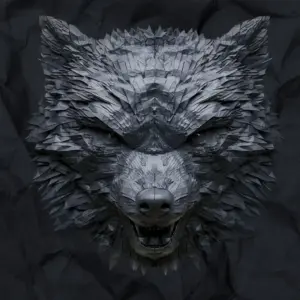Look, we get it. Channeling aggression in the weight room is hard. Some days you’re crushing PRs with perfect control. Other days? That same energy feels like a wildfire you can’t contain. Maybe you’ve pushed too hard and tweaked something. Or maybe you’ve held back so much that your workout felt pointless. For recreational lifters who thrive on competition and intensity, finding that sweet spot between controlled power and reckless abandon can feel impossible.
The Question: How Can I Channel My Competitive Fire Without Burning Out or Getting Hurt?
This question hits at the heart of what makes strength training so challenging for natural competitors. When your entire athletic identity revolves around conquering challenges and dominating opponents, how do you bring that same energy to an empty gym at 6 AM? How do you attack a barbell with the same intensity you’d bring to a boxing ring, without letting that aggression turn destructive?
The Quick Answer:
Here’s the truth:  The Gladiator (EORA) needs opposition to thrive. Without a clear adversary, their competitive fire can turn inward, leading to overtraining, poor form, or complete disengagement. The solution isn’t to suppress that aggression. It’s to redirect it strategically.
The Gladiator (EORA) needs opposition to thrive. Without a clear adversary, their competitive fire can turn inward, leading to overtraining, poor form, or complete disengagement. The solution isn’t to suppress that aggression. It’s to redirect it strategically.
Think of it this way. A powerlifter preparing for competition doesn’t just randomly max out every session. They build systematically toward peak performance, treating each training phase as a strategic battle in a larger war. The barbell becomes the opponent. Personal records become territory to conquer. And most importantly, they learn to modulate their intensity based on the battlefield they’re facing that day.
The key is creating structured opposition within your training. This means setting up clear challenges, tracking meaningful metrics, and most crucially, learning when to unleash full intensity and when to keep it in reserve.
The Deeper Dive: Why the The Gladiator is Prone to This
The Gladiator sport profile brings unique psychological patterns to strength training that create both advantages and vulnerabilities. Their reactive instincts and need for tangible opposition can make solo training feel empty and purposeless.
Picture a recreational lifter walking into their garage gym. There’s no crowd. No competitor across the platform. Just them and the weights. For someone who unlocks their full potential only when facing a living, breathing opponent, this scenario presents a fundamental challenge. The very qualities that make them explosive in competition become liabilities in isolation.
This creates a dangerous cycle. They might artificially manufacture intensity by constantly testing maxes, turning every session into a mock competition. Or they swing the other direction, going through the motions without real engagement because there’s no one to beat. Neither approach builds sustainable strength.
The challenge intensifies because strength training rewards patience and systematic progression. While other athletes might find satisfaction in perfecting technique or following a program to the letter, The Gladiator struggles with training that lacks immediate competitive stakes. They need to see direct correlation between today’s effort and tomorrow’s victory.
Their autonomous approach to competition, which serves them well in reactive sports, can lead to program hopping in the weight room. One week they’re following a powerlifting template. The next, they’ve switched to CrossFit because it felt more competitive. This constant search for the perfect adversary prevents the consistent, progressive overload necessary for real strength gains.
Discover Your Own Sport Profile
This article explores one of 16 profiles. Find out which one you are and unlock a personalized blueprint for your athletic journey.
Take the Free TestThe Playbook: A 3-Step Plan to Overcome It
Step 1: Create Your Arena
Transform your training environment into a competitive space, even when training alone. This starts with establishing clear performance benchmarks that matter to you personally. Not just weight on the bar, but metrics that tap into your competitive nature.
Consider tracking rep PRs at specific weights. Instead of always chasing one-rep maxes, compete against your previous performances at submaximal loads. Hit 225 for 8 reps last month? Your opponent today is that previous version of yourself demanding 9 reps. This creates immediate, tangible opposition without the injury risk of constant max attempts.
Build in competitive checkpoints throughout your program. Every fourth week might be a “test week” where you assess progress. These become your game days, the moments where you can unleash full intensity with purpose. Between these checkpoints, you’re building toward victory, not just going through motions.
Step 2: Master Strategic Aggression
Learn to dial your intensity like a dimmer switch, not an on/off button. This means developing different “gears” for different training scenarios. Think of it like a fighter who doesn’t throw haymakers in every round but picks their moments for maximum impact.
On heavy days, channel full competitive fire but within technical boundaries. Set clear performance standards: the rep counts only if form stays tight. This creates a dual challenge that engages both your competitive drive and your need for mastery. You’re not just moving weight; you’re dominating it with precision.
For volume or technique days, reframe the challenge. Instead of competing on load, compete on execution. How perfectly can you perform each rep? How consistently can you hit the same bar path? This isn’t backing off; it’s attacking a different aspect of performance. Elite fighters don’t just train power. They drill technique until it becomes weaponized.
Step 3: Build Your Battle Rhythm
Structure your training calendar like a competitive season. This gives context to every session and prevents the aimless feeling that kills motivation. Map out 12-week blocks with clear competitive goals at the end. Maybe it’s a mock meet in your garage. Maybe it’s testing against standardized strength benchmarks. The specifics matter less than having a clear target.
Within each week, create variety in your battles. Monday might be your heavy warfare day where you compete against the iron. Wednesday could focus on volume PRs or density challenges. Friday becomes your technical mastery day. Each session serves a purpose in your larger campaign.
Most importantly, schedule deliberate deload periods. Frame these as strategic retreats, not weakness. A gladiator who fights every single day burns out quickly. One who picks their battles and recovers strategically fights for years. During deloads, maintain movement quality but pull back intensity. Think of it as sharpening your weapons for the next assault.
Conclusion: Turning a Weakness Into a Cue for Action
Your competitive fire isn’t a liability in strength training. It’s rocket fuel waiting for the right ignition system. The challenge isn’t learning to train without aggression. It’s learning to deploy that aggression strategically for maximum gains and minimum burnout.
Every time you feel that familiar frustration creeping in, when the weights feel meaningless without an opponent, remember this: The greatest gladiators didn’t just know how to fight. They knew when to fight, how hard to fight, and most importantly, they understood that every training session was preparation for the next true battle.
Your aggression is a tool. Like any tool, its value comes from skillful application, not constant use. Master this balance, and you’ll find that the weight room becomes not just another arena for competition, but perhaps your greatest training ground for channeling the warrior within.


